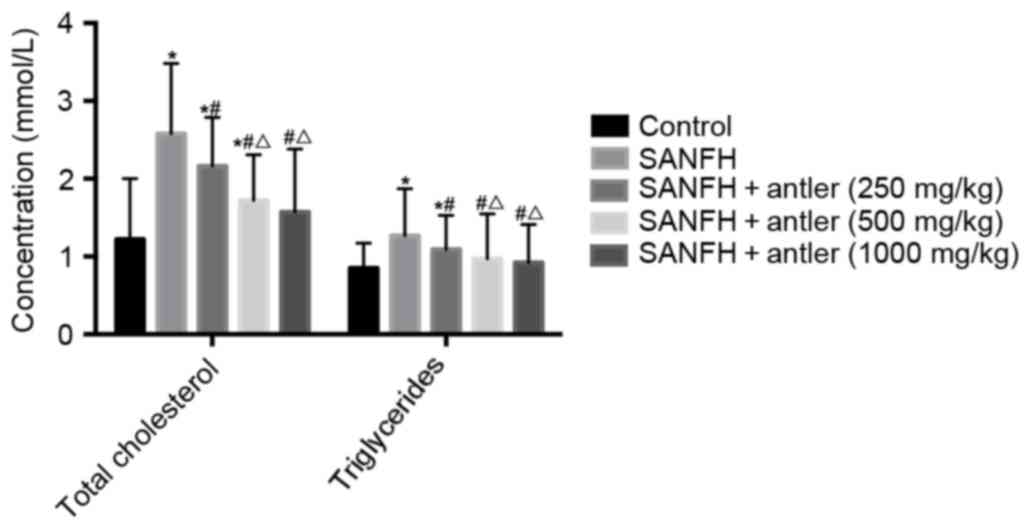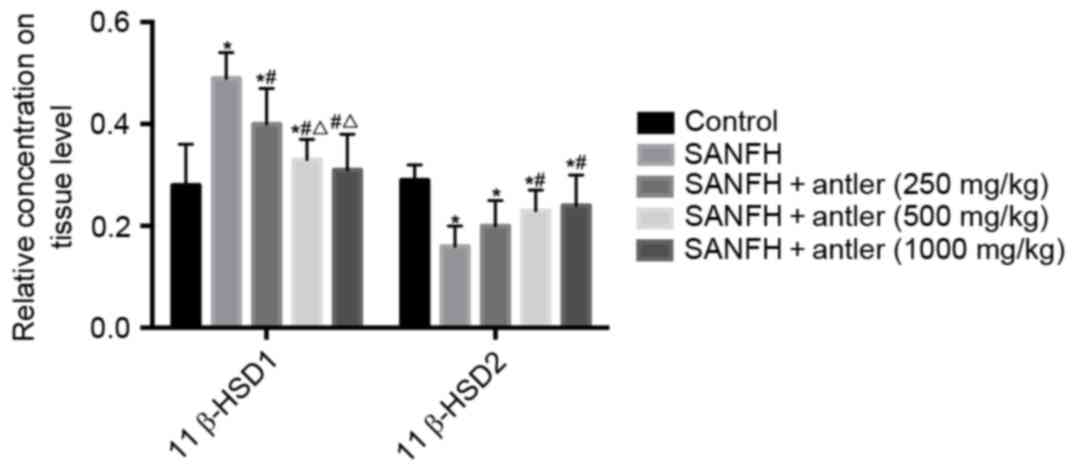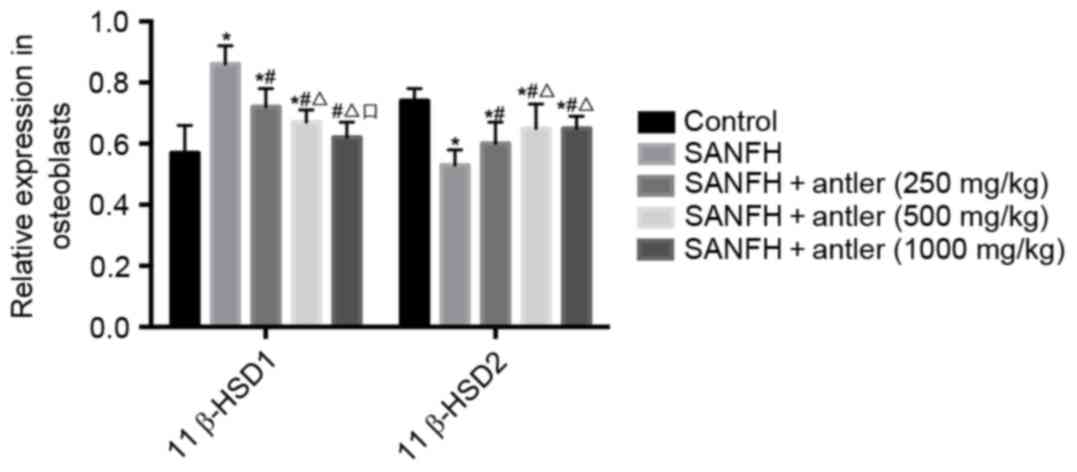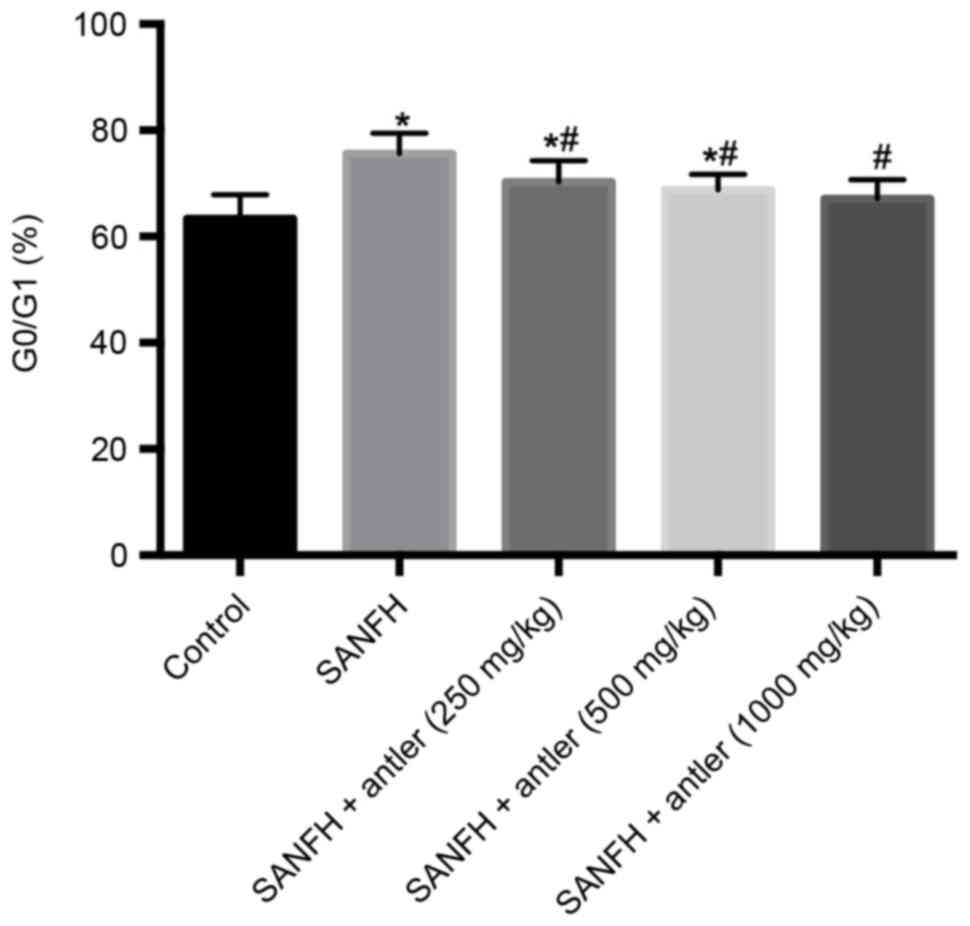|
1
|
Rodriguez-Merchan EC, Martinez-Lloreda A,
Sanjurjo MJ and Jimenez-Yuste V: Osteonecrosis of the femoral
headMusculoskeletal Aspects of Haemophilia. Rodriguez-Merchan EC,
Goddard NJ and Lee CA: Springer; Berlin, Heidelberg: pp. 153–158.
2014
|
|
2
|
Liakakos T, Thomakos N, Fine PM, Dervenis
C and Young RL: Peritoneal adhesions: Etiology, pathophysiology and
clinical significance. recent advances in prevention and
management. Dig Surg. 18:260–273. 2001. View Article : Google Scholar : PubMed/NCBI
|
|
3
|
Fisher DE and Bickel WH:
Corticosteroid-induced avascular necrosis. a clinical study of
seventy-seven patients. J Bone Joint Surg Am. 53:859–873. 1971.
View Article : Google Scholar : PubMed/NCBI
|
|
4
|
Bozic KJ, Zurakowski D and Thornhill TS:
Survivorship analysis of hips treated with core decompression for
nontraumatic osteonecrosis of the femoral head. J Bone Joint Surg
Am. 81:200–209. 1999. View Article : Google Scholar : PubMed/NCBI
|
|
5
|
Zaidi M, Sun L, Robinson LJ, Tourkova IL,
Liu L, Wang Y, Zhu LL, Liu X, Li J, Peng Y, et al: ACTH protects
against glucocorticoid-induced osteonecrosis of bone. Proc Natl
Acad Sci USA. 107:pp. 8782–8787. 2010; View Article : Google Scholar : PubMed/NCBI
|
|
6
|
Su P, Li R, Liu S, Zhou Y, Wang X, Patil
N, Mow CS, Mason JC, Huang D and Wang Y: Age at onset-dependent
presentations of premature hip osteoarthritis, avascular necrosis
of the femoral head, or legg-calvé-perthes disease in a single
family, consequent upon a p. Gly1170Ser mutation of COL2A1.
Arthritis Rheum. 58:1701–1706. 2008. View Article : Google Scholar : PubMed/NCBI
|
|
7
|
Liu J, Chen H, Zhang H, et al: Clinical
characteristics and risk factors of avascular necrosis of the
femoral head in patients with lupus nephritis. Chin J Nephrol Dial
Transplant. 2013.
|
|
8
|
Zeng C, Song YC, Cai DZ and Liu B:
Clinical characteristics and complication prevention of total hip
arthroplasty for the patients of femoral head necrosis with
systemic lupus erythematosus. Chin J Joint Surg. 454–458. 2009.(In
Chinese).
|
|
9
|
Kawate K, Yajima H, Ohgushi H, Kotobuki N,
Sugimoto K, Ohmura T, Kobata Y, Shigematsu K, Kawamura K, Tamai K
and Takakura Y: Tissue-engineered approach for the treatment of
steroid-induced osteonecrosis of the femoral head: Transplantation
of autologous mesenchymal stem cells cultured with beta-tricalcium
phosphate ceramics and free vascularized fibula. Artif Organs.
30:960–962. 2006. View Article : Google Scholar : PubMed/NCBI
|
|
10
|
Zhao FC, Li ZR and Guo KJ: Clinical
analysis of osteonecrosis of the femoral head induced by steroids.
Orthop Surg. 4:28–34. 2012. View Article : Google Scholar : PubMed/NCBI
|
|
11
|
LaPorte DM, Mont MA, Mohan V, Jones LC and
Hungerford DS: Multifocal osteonecrosis. J Rheumatol. 25:1968–1974.
1998.PubMed/NCBI
|
|
12
|
Barnes PJ and Adcock IM: How do
corticosteroids work in asthma? Ann Intern Med. 139:359–370. 2003.
View Article : Google Scholar : PubMed/NCBI
|
|
13
|
Liu X, Zhang Y and Huo L: A study on
application of protocol nursing in corticosteroids treatment
compliance of nephritic syndrome patients. Chin Nurs Res.
45:539–545. 2008.
|
|
14
|
Lee AC and Wong LG: Facial palsy,
corticosteroids, and acute leukemia. Pediatr Neurol. 36:137–138.
2007. View Article : Google Scholar : PubMed/NCBI
|
|
15
|
Steelman J and Kappy M: Adrenal
suppression and growth retardation from ocular corticosteroids. J
Pediatr Ophthalmol Strabismus. 38:177–178. 2001.PubMed/NCBI
|
|
16
|
Morton NM: Obesity and corticosteroids:
11beta-hydroxysteroid type 1 as a cause and therapeutic target in
metabolic disease. Mol Cell Endocrinol. 316:154–164. 2010.
View Article : Google Scholar : PubMed/NCBI
|
|
17
|
Need AG: Corticosteroids and osteoporosis.
Aust N Z J Med. 17:267–272. 1987. View Article : Google Scholar : PubMed/NCBI
|
|
18
|
Hengge UR, Ruzicka T, Schwartz RA and Cork
MJ: Adverse effects of topical glucocorticosteroids. J Am Acad
Dermatol. 54:1–18. 2006. View Article : Google Scholar : PubMed/NCBI
|
|
19
|
Gebhard KL and Maibach HI: Relationship
between systemic corticosteroids and osteonecrosis. Am J Clin
Dermatol. 2:377–388. 2001. View Article : Google Scholar : PubMed/NCBI
|
|
20
|
Skalka HW and Prchal JT: Effect of
corticosteroids on cataract formation. Arch Ophthalmol.
98:1773–1777. 1980. View Article : Google Scholar : PubMed/NCBI
|
|
21
|
Lavin PJ and Workman R: Cushing syndrome
induced by serial occipital nerve blocks containing
corticosteroids. Headache. 41:902–904. 2001. View Article : Google Scholar : PubMed/NCBI
|
|
22
|
Cranney A, Welch V, Adachi J, Homik J,
Shea B, Suarez-Almazor ME, Tugwell P and Wells GA: Calcitonin for
preventing and treating corticosteroid-induced osteoporosis
(Review). Cochrane Database Syst Rev. CD0019832000.PubMed/NCBI
|
|
23
|
Kerachian MA, Cournoyer D, Harvey EJ, Chow
TY, Bégin LR, Nahal A and Séguin C: New insights into the
pathogenesis of glucocorticoid-induced avascular necrosis:
Microarray analysis of gene expression in a rat model. Arthritis
Res Ther. 12:R1242010. View
Article : Google Scholar : PubMed/NCBI
|
|
24
|
Baktursun P, Peng H and Li BB: Effects of
antler powder on treatment of corticosteroid-induced avascular
necrosis of the femoral head in rats. J Clin Rehabilitative Tiss
Eng Res. 346:1030–1031. 2011.
|
|
25
|
Tian L, Tian XY, Fan NN, Liang XP and YU
XM: Treatment of avascular necrosis of the femoral head (ANFH) with
induced differentiation VEGF-165 gene modified mesenchymal stem
cells in rabbits. Journal of Shenyang Medical College. 1–144.
2009.
|
|
26
|
Sen RK: Management of avascular necrosis
of femoral head at pre-collapse stage. Indian J Orthop. 43:6–16.
2009. View Article : Google Scholar : PubMed/NCBI
|
|
27
|
Pritchett JW: Statin therapy decreases the
risk of osteonecrosis in patients receiving steroids. Clin Orthop
Relat Res. 1–178. 2001.
|
|
28
|
Lai KA, Shen WJ, Yang CY, Shao CJ, Hsu JT
and Lin RM: The use of alendronate to prevent early collapse of the
femoral head in patients with nontraumatic osteonecrosis. J Bone
Joint Surg Am. 87:2155–2159. 2005. View Article : Google Scholar : PubMed/NCBI
|
|
29
|
Kruuk EB, Slate J, Pemberton JM,
Brotherstone S, Guinness F and Clutton-Brock T: Antler size in red
deer: Heritability and selection but no evolution. Evolution.
56:1683–1695. 2002. View Article : Google Scholar : PubMed/NCBI
|
|
30
|
Gould SJ: The origin and function of
‘BIZARRE’ structures: Antler size and skull size in the ‘IRISHELK,’
megaloceros giganteus. Evolution. 28:191–220. 1974. View Article : Google Scholar : PubMed/NCBI
|
|
31
|
Chapman DI: Antler structure and
function-a hypothesis. J Biomech. 14:195–197. 1981. View Article : Google Scholar : PubMed/NCBI
|
|
32
|
Li Y, Zhao Y, Tang R and Qu X: Preventive
and therapeutic effects of antler collagen on osteoporosis in
ovariectomized rats. Afr J Biotechnol. 9:6437–6441. 2010.
|
|
33
|
Baktursun P, Peng H and Li BB: Effects of
antler powder on treatment of corticosteroid-induced avascular
necrosis of the femoral head in rats[J]. Journal of Clinical
Rehabilitative Tissue Engineering Research. 346:1030–1031.
2011.
|
|
34
|
Seckl JR and Walker BR: Minireview:
11beta-hydroxysteroid dehydrogenase type 1-a tissue-specific
amplifier of glucocorticoid action. Endocrinology. 142:1371–1376.
2001. View Article : Google Scholar : PubMed/NCBI
|
|
35
|
Nakano D and Nishiyama A: Programmed
11β-hydroxysteroid dehydrogenase type 2 reduction: A possible cause
of adult-onset disease? J hypertens. 29:201–203. 2011. View Article : Google Scholar : PubMed/NCBI
|
|
36
|
Kaur K, Hardy R, Ahasan MM, Eijken M, van
Leeuwen JP, Filer A, Thomas AM, Raza K, Buckley CD, Stewart PM, et
al: Synergistic induction of local glucocorticoid generation by
inflammatory cytokines and glucocorticoids: Implications for
inflammation associated bone loss. Ann Rheum Dis. 69:1185–1190.
2010. View Article : Google Scholar : PubMed/NCBI
|
|
37
|
Kerachian MA, Séguin C and Harvey EJ:
Glucocorticoids in osteonecrosis of the femoral head: A new
understanding of the mechanisms of action. J Steroid Biochem Mol
Biol. 114:121–128. 2009. View Article : Google Scholar : PubMed/NCBI
|
|
38
|
Combes R and Balls M: Comments on the
sub-group reports of the EU technical expert working group on the
revision of directive 86/609/EEC on the protection of animals used
for experimental and other scientific purposes. Altern Lab Anim.
35:155–175. 2007.PubMed/NCBI
|
|
39
|
Wen Q, Ma L, Chen YP, Yang L, Luo W and
Wang XN: A rabbit model of hormone-induced early avascular necrosis
of the femoral head. Biomed Environ Sci. 21:398–403. 2008.
View Article : Google Scholar : PubMed/NCBI
|
|
40
|
Mont MA, Jones LC, Einhorn TA, Hungerford
DS and Reddi AH: Osteonecrosis of the femoral head. Potential
treatment with growth and differentiation factors. Clin Orthop
Relat Res. 355 Suppl:S314–S335. 1998. View Article : Google Scholar : PubMed/NCBI
|
|
41
|
Baneux PJ, Garner D, Mcintyre HB and
Holshuh HJ: Euthanasia of rabbits by intravenous administration of
ketamine. J Am Vet Med Assoc. 189:1038–1039. 1986.PubMed/NCBI
|
|
42
|
Glenn EM: Steroids, nonsteroids,
intermediary metabolism, inflammation and their probable
interrelationships. Hormonal Steroids Biochem Pharmacol Ther.
1:319–349. 1964. View Article : Google Scholar
|
|
43
|
Hemphill N and Morgan DR: Speaker: For
inflammation, steroids should be used boldly. Primary Care
Optometry News. April. 2013, https://www.healio.com/footer/healio-dot-com/about-the-wyanoke-group
|
|
44
|
Denso P: Free communications-session
1-inflammation & steroidsfree. Clin Experiment Aller. 23:75–76.
1993. View Article : Google Scholar
|
|
45
|
Griffith JF, Antonio GE, Kumta SM, Hui DS,
Wong JK, Joynt GM, Wu AK, Cheung AY, Chiu KH, Chan KM, et al:
Osteonecrosis of hip and knee in patients with severe acute
respiratory syndrome treated with steroids. Radiology. 235:168–175.
2005. View Article : Google Scholar : PubMed/NCBI
|
|
46
|
Chen RC, Tang XP, Tan SY, Liang BL, Wan
ZY, Fang JQ and Zhong N: Treatment of severe acute respiratory
syndrome with glucosteroids: The guangzhou experience. Chest.
129:1441–1452. 2006. View Article : Google Scholar : PubMed/NCBI
|
|
47
|
Rapała K, Walczak P and Truszczyńska A:
Orthopedic diagnostic and therapeutic problems in avascular
poststeroid necrosis of femur head in the course acute
lymphoblastic leukemia-description of 3 cases. Chir Narzadow Ruchu
Ortop Pol. 75:121–125. 2010.PubMed/NCBI
|
|
48
|
Wu D, Song D, Ni J and Dai R: Avascular
necrosis of the femoral head due to the bilateral injection of
heroin into the femoral vein: A case report. Exp Ther Med.
6:1041–1043. 2013. View Article : Google Scholar : PubMed/NCBI
|
|
49
|
Iwata H, Hasegawa Y, Mizuno M, Genda E,
Kataoka Y and Kada A: Progression of avascular necrosis of femoral
head and choice of treatment. Nagoya J Med Sc. 54:27–39. 1992.
|
|
50
|
Jones LC and Hungerford DS: Osteonecrosis:
Etiology, diagnosis, and treatment. Curr Opin Rheumatol.
16:443–449. 2004. View Article : Google Scholar : PubMed/NCBI
|
|
51
|
Hungerford DS: Treatment of osteonecrosis
of the femoral head: Everything's new. J Arthroplasty. 22 4 Suppl
1:S91–S94. 2007. View Article : Google Scholar
|
|
52
|
Fritsch EW and Gleitz M: Ceramic femoral
head fractures in total hip arthroplasty. Clin Orthop Relat Res.
1–136. 1996.PubMed/NCBI
|
|
53
|
Cabanela ME: The bipolar prosthesis in
avascular necrosis of the femoral head. Semin Arthroplasty.
2:228–233. 1991.PubMed/NCBI
|
|
54
|
Kawai K, Tamaki A and Hirohata K:
Steroid-induced accumulation of lipid in the osteocytes of the
rabbit femoral head. A histochemical and electron microscopic
study. J Bone Joint Surg Am. 67:755–763. 1985. View Article : Google Scholar : PubMed/NCBI
|
|
55
|
Jones JP Jr: Fat embolism and
osteonecrosis. Orthop Clin North Am. 16:595–633. 1985.PubMed/NCBI
|
|
56
|
Jones JP Jr and Sakovich L: Fat embolism
of bone. A roentgenographic and histological investigation, with
use of intra-arterial lipiodol, in rabbits. J Bone Joint Surg Am.
48:149–164. 1966. View Article : Google Scholar : PubMed/NCBI
|
|
57
|
Cooper MS, Walker EA, Bland R, Fraser WD,
Hewison M and Stewart PM: Expression and functional consequences of
11beta-hydroxysteroid dehydrogenase activity in human bone. Bone.
27:375–381. 2000. View Article : Google Scholar : PubMed/NCBI
|
|
58
|
Cooper MS, Rabbitt EH, Goddard PE,
Bartlett WA, Hewison M and Stewart PM: Osteoblastic
11beta-hydroxysteroid dehydrogenase type 1 activity increases with
age and glucocorticoid exposure. J Bone Miner Res. 17:979–986.
2002. View Article : Google Scholar : PubMed/NCBI
|
|
59
|
Chen XP, Qian H, Wu JJ, Ma XW, Gu ZX, Sun
HY, Duan YZ and Jin ZL: Expression of vascular endothelial growth
factor in cultured human dental follicle cells and its biological
roles. Acta Pharmacol Sin. 28:985–993. 2007. View Article : Google Scholar : PubMed/NCBI
|















